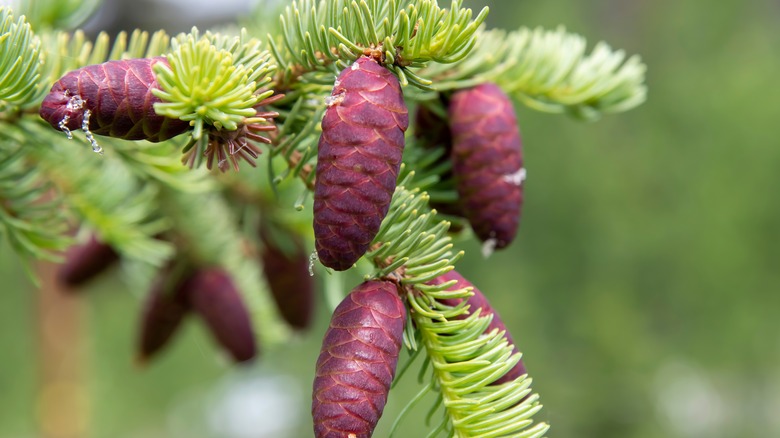Red spruce trees are truly remarkable sights to behold. Ancient coniferous giants of the forest with a long history of ethnobotanical use, the red spruce is a phenomenal and beautiful tree to incorporate into your outdoor space. Unique and eccentric in nature, red spruce trees are a beacon in the forest and the residential landscape. With a gorgeous conical shape, tiny little pinecones, and beautiful foliage, this North American native is a must-have in the garden. However, these beauties are much happier when mulched correctly, as they have specific soil requirements. Properly mulching your red spruce tree will be an absolute gamechanger and ensure you have a happy, thriving spruce tree.
Since red spruce trees (Picea rubens) have a specific native range and prefer higher altitudes, depending on where you live, you could have to make some adjustments to ensure your red spruce is happy. Fortunately, these are relatively easy trees to grow, and they will be satisfied for as long as they are placed in the right location and mulched correctly.
What is the red spruce tree?

Found from southern Canada down the Appalachian Mountain range into North Carolina, the red spruce is a gorgeous conifer that provides immense ecological value for wildlife. It typically grows in high-altitude mountainous areas and can grow in various ecosystems, from drier upland habitats to wetland environments. However, its preference is for poor, acidic, well-draining sandy soils. Forming a broader crown than other spruce species, the red spruce can grow up to 100 feet and live up to 400 years.
The wood has a reddish hue and is exceptionally resilient, leading to its usage for paper, lumber, and musical stringed instruments. Commonly used as a Christmas tree, this beautiful member of the pine family is a widely loved and utilized tree. Thriving in mostly shallow acidic soils, it is a highly versatile tree that can live in rocky mountain soils where other species cannot grow. A cool-region tree that thrives in full sun and with lots of rain, it can grow in a variety of habitats. However, it will only grow in places with particularly cold winters and humid summers. An extremely valuable tree for wildlife, many species depend on the red cedar for their survival.
How to correctly mulch your Red Spruce tree
Because of its soil preference and growth habit, the red spruce’s roots are particularly shallow. Mulching helps retain moisture and regulate soil temperatures. Furthermore, adequate mulching is vital to ensuring the success of your red spruce tree. Choosing the right kind of mulch is also critical. Additionally, red spruces prefer well-draining, acidic soils, so using pine bark or pine straw is an excellent option for mulching. As pine bark or straw breaks down, it is essentially neutral in pH, which is perfect for red spruces as their preferred soil is neutral but leans acidic. If you think your red spruce needs less acid, add garden lime. While they typically don’t need much pruning, the best time of year to prune your red spruce tree is late winter.
Be sure to place your red spruce tree in an area of your yard that gets full sun. While they can tolerate full shade, their growth habit will be slow and leggy. The most crucial aspect of mulching is ensuring you don’t mulch too thick or too thin. Also, do not make a mulch volcano, as this can cause lots of fungal issues. When mulch is piled up on the base of the tree — hence the term, “mulch volcano” — it creates an environment for the fungi to start breaking down the tree trunk, which causes all kinds of issues for the tree. Be sure to spread the mulch out and away from the tree’s base, and do not bury your red cedar too deep.